Paksiw na pata is one of the well known Filipino dish. Pork hock is cooked in vinegar, soy sauce, brown sugar and spices. This paksiw dish is very different from the fish paksiw recipes and it turns out that the pork dish is similar to adobo but the only difference is the sweet and sour taste. The obvious ingredients you will find in paksiw na pata so you can identify it, is the banana blossoms. Most of the time dried banana blossoms are used because it gives the dish a distinctive aroma.
Paksiw na Pata: A Taste of Home in Every Bite
When I think of that pork dish, memories of our Sunday family lunches come rushing back. The aroma of simmering pork hock infused with vinegar, soy sauce, and spices filled our home, signaling that a delicious meal was about to be served. It was always my Tito Boy who prepared this dish with such care, explaining how he learned it from his own father back in their hometown in Bulacan. “The secret,” he’d say with a knowing smile, “is in the banana blossoms—they make all the difference.”
It is a quintessential Filipino dish that’s as comforting as it is flavorful. Its sweet and tangy taste, balanced by the savory depth of soy sauce and the subtle floral aroma of dried banana blossoms, sets it apart from its cousins like adobo. While its preparation may seem simple, the techniques and ingredients used are what give this dish its soul.
What Makes Paksiw na Pata Special?
Unlike the more common paksiw na isda, which features fish in a sour broth, paksiw na pata focuses on pork hock—a part of the pig often overlooked but deeply valued in Filipino cuisine. This cut, with its mix of tender meat, gelatinous skin, and connective tissues, transforms into melt-in-your-mouth goodness when cooked low and slow.
The addition of banana blossoms gives the dish its unique identity. My Lola Nora insisted on using dried banana blossoms, which she would soak in water before cooking. “Fresh blossoms are good,” she’d say, “but the dried ones give it a more concentrated flavor and aroma.” She wasn’t wrong—the earthy, slightly sweet taste of the blossoms complements the tangy vinegar and the richness of the pork.
Cooking Techniques That Bring Out the Best
One of the essential techniques in cooking the pork dish is boiling the pork hock with vinegar, garlic, and peppercorns before adding other ingredients. This step does more than just cook the meat; it neutralizes the raw smell of the pork and infuses it with the flavors of the spices. Vinegar, a common ingredient in Filipino cooking, not only adds tanginess but also acts as a tenderizer, breaking down the tough fibers of the meat.
Soaking the banana blossoms in water is another crucial step that shouldn’t be skipped. It helps soften the blossoms and remove any bitterness, ensuring they blend harmoniously into the dish. My Ate Liza once skipped this step during a rushed cooking session, and let’s just say, the dish lacked the usual magic. “Lesson learned!” she laughed, as we teased her endlessly.
Another key to perfecting paksiw na pata is patience. Simmering the pork legs until they’re tender allows the flavors to develop fully, and the sauce thickens into a glossy, flavorful glaze. Stirring occasionally prevents the pork from sticking to the pot, a tip I learned the hard way after my first attempt left me with a slightly burnt bottom. Tito Boy’s advice? “Low and slow wins the race.”
A Little History on Paksiw
The word paksiw comes from the Filipino term for “to cook in vinegar.” While its most traditional form uses fish, over time, the method has been adapted to other proteins, like pork and even lechon. This adaptability reflects the Filipino spirit of making the most of what’s available and turning it into something special.
Paksiw na pata, in particular, is thought to have evolved as a way to use pork hocks, a cut that’s economical yet full of flavor when cooked properly. The dish’s sweet and tangy profile is influenced by the Filipino love for contrasting tastes—a legacy of our diverse culinary heritage.
A Dish for All Occasions
Paksiw na pata isn’t just for Sunday lunches or special occasions. It’s the kind of dish that brings comfort on a rainy day, served over steamed rice to soak up every drop of its rich, flavorful sauce. My Kuya Jomar swears by pairing it with a side of fried eggplant, a combination he discovered during his college days in Cebu.
And just like adobo, it gets better the longer it sits. Leftovers reheated the next day taste even more flavorful as the sauce continues to meld with the pork. My Nanay would always make a big pot, knowing we’d enjoy it for days. “Cooking once, enjoying twice—or thrice!” she’d say with a wink.
A Recipe to Try
If you’ve never made paksiw na pata before, don’t worry—it’s a forgiving dish that welcomes experimentation. The classic combination of vinegar, soy sauce, and sugar creates a balance of flavors that’s hard to resist. Adjust the sweetness or tanginess to your liking, and don’t forget the banana blossoms—they’re what give this dish its signature aroma.
Cooking it isn’t just about following a recipe. It’s about connecting with our roots, savoring the traditions passed down through generations, and sharing a piece of home with loved ones. So, the next time you’re in the mood for something warm and hearty, give this dish a try. Who knows? It might just become a favorite in your home too.
How to Cook Paksiw na Pata
Ingredients
- 1 whole large pork pata or pork hock (front part) chopped
- 1 Tbsp. minced garlic
- 1/2 cup soy sauce
- 1/2 cup vinegar
- 1/2 cup water
- 1/2 cup dried banana blossoms soaked in water( about ½ cup)
- 4 tbsp. brown sugar
- 1 pc bay leaf
- 1 tbsp. whole peppercorns
- salt to taste
- MSG or Vetsin
Instructions
How to Cook Paksiw na Pata:
- Clean pork leg and chop into serving piece.
- Combine vinegar, garlic, peppercorns and water and boil the pork legs.
- Then add the soaked banana blossoms along with the water used in soaking.
- Simmer pork legs until tender. Pour additional water if needed;
- To prevent from sticking, stir once in a while.
- Then add the soy sauce and sugar.
- Boil for a few more minutes. Then add the MSG and salt to taste.
- Serve hot. Makes 4 to 6 servings.
Notes
Cooking Tips:
Use Vinegar Sparingly at First
Vinegar is a key ingredient, but adding too much too soon can overpower the dish. Start with the recommended amount and adjust gradually as the dish simmers to balance the tanginess. This method allows the flavors of the pork, banana blossoms, and soy sauce to shine without being overshadowed.Soak Dried Banana Blossoms Properly
Dried banana blossoms need to be soaked in warm water before cooking to soften them and remove any bitterness. This step ensures they blend seamlessly into the dish, adding a subtle sweetness and earthy aroma. Always save the soaking water—it carries extra flavor that enhances the dish when added to the pot.Simmer Slowly for Tender Meat
The pork hock dish is all about tender pork hocks that melt in your mouth. Cooking on low heat and allowing the dish to simmer slowly helps break down the tough connective tissues while deepening the sauce's flavor. Stir occasionally to prevent sticking and let the rich, glossy sauce develop naturally.
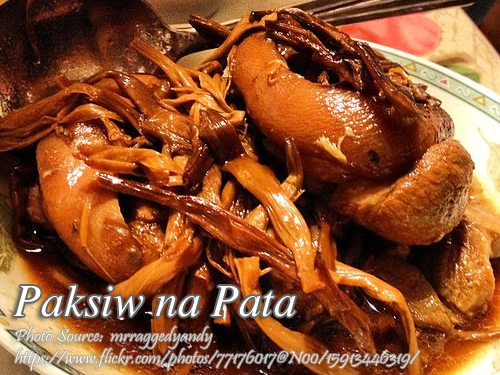

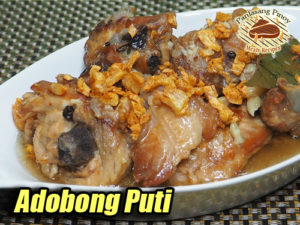
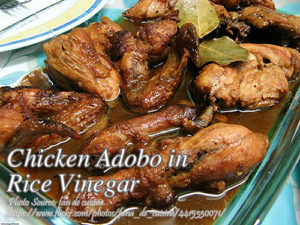
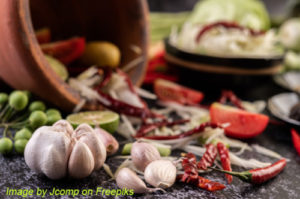
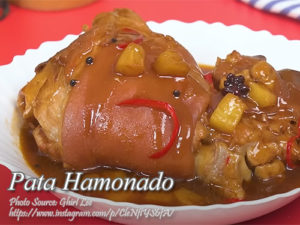
Hi Han, I’m afraid you can’t use fresh banana blossoms because it doesn’t have that distinctive taste and aroma of dried banana blossoms.
I love your paksiw na pata recipe but just wondering if I can use fresh banana blossoms?
Where can you buy banana blossoms?
Hi Sherry,
It’s in the sundry section of a supermarkets.